I spent most of this week at the North American Prairie Conference, which was held in Winona this year.
It was fun to see lots of the prairie people I know, and to meet some new ones. One of my favorite parts of the conference is field trip day. I wanted to see some Wisconsin places, so I chose a trip that visited two sand prairies near LaCrosse.
Holland Sand Prairie is a beautifully preserved 60 acre sand prairie.
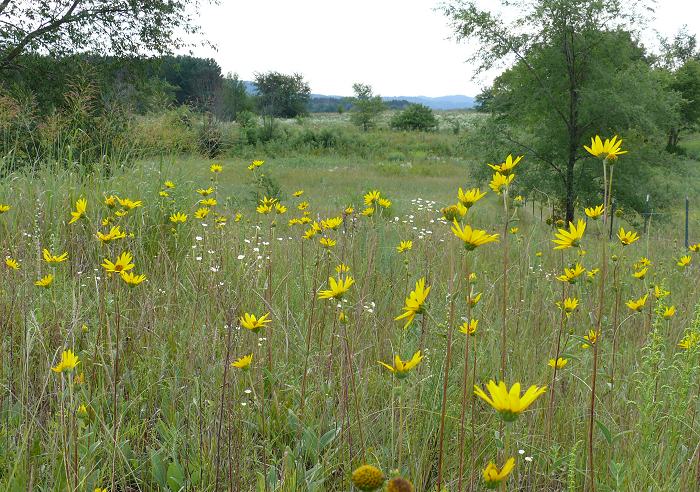
It’s a State Natural Area, owned and managed by the Mississippi Valley Conservancy.
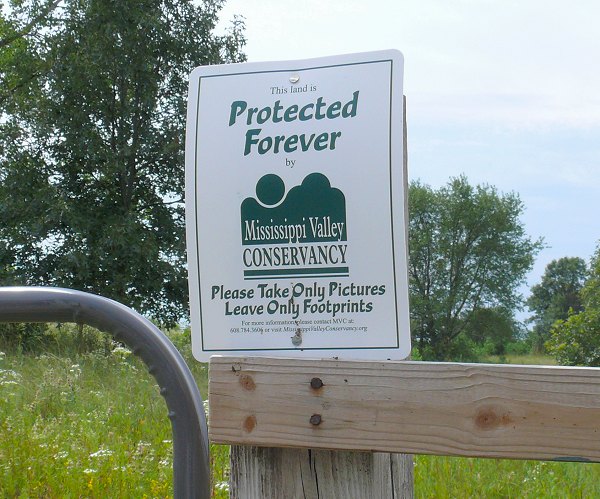
The landscape is slightly rolling, with a few bushes and trees, but mostly low dry prairie species.

There was lots of Dotted Horsemint (Monarda punctata) – a common plant in dry sandy places.
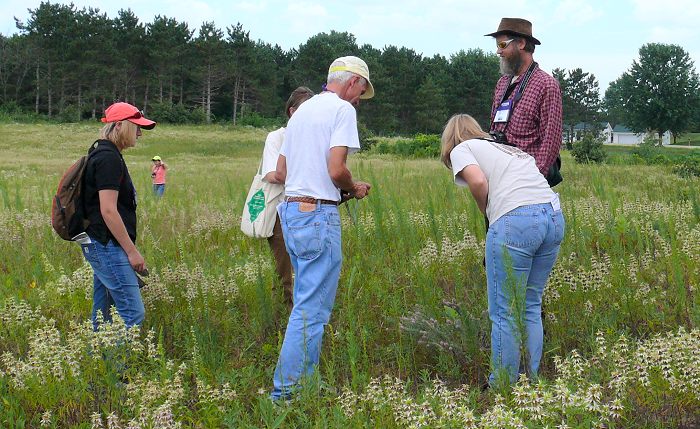
We found a few flowers of Rough Blazing Star, but most of it will bloom in a week or two. There were thousands of Rough Blazing Star plants – it should be spectacular!
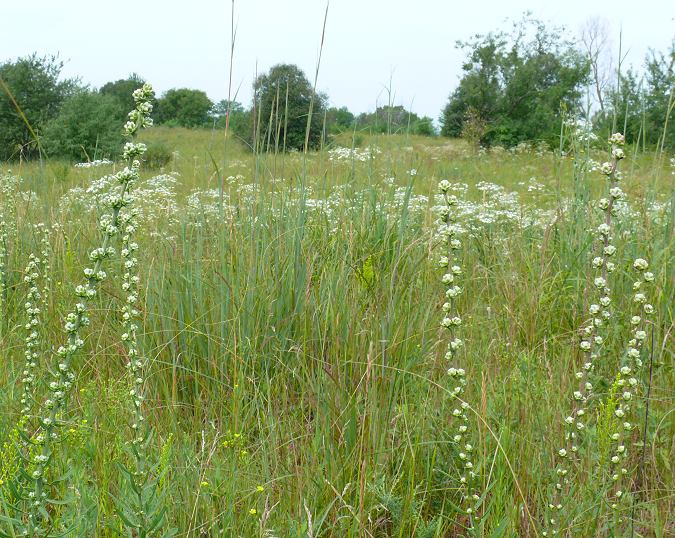
We also saw Clasping Milkweed (Asclepias amplexicaulis) – an unusual plant that I’d never seen before.

Silky Prairie Clover (Dalea villosa) – another unusual plant that lives only in sand prairies.

I startled a Mourning Dove from its nest as I was walking in the prairie. I never knew that Mourning Doves made nests on the ground. But here are the two babies. It wasn’t much of a nest – just a few sticks flat on the sand.

I saw some great prairie insects. I did a story about them – with pictures – on our new Bugfolks website – a place for people who are interested in observing and raising insects. Let me know if you’re interested in contributing to the blog – anyone can read it, but if you want to post stories, you have to be registered.
We also visited the LaCrosse River State Trail, some of which has been designated as a state natural area. It’s a bike trail running parallel to a railroad track. Between the two is a remnant sand prairie with some unusual plants and insects.


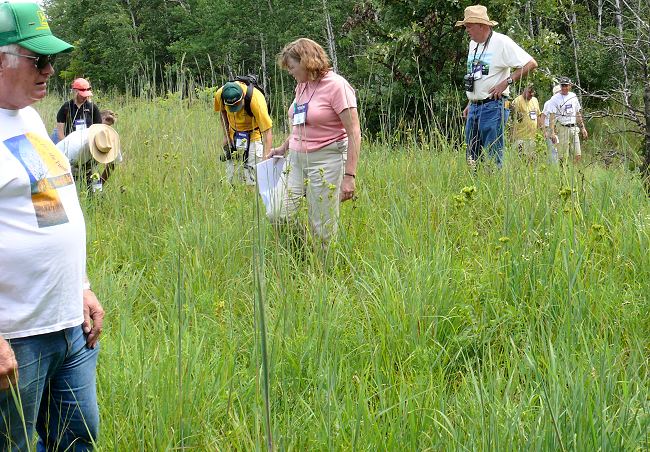
Bob Lee is the local guide and botanist for the trail. He started leading tours there in the 1990s, and has been doing it ever since. He’s a self-taught botanist, and is passionate about the prairie and the plants that grow there.
Bob Lee
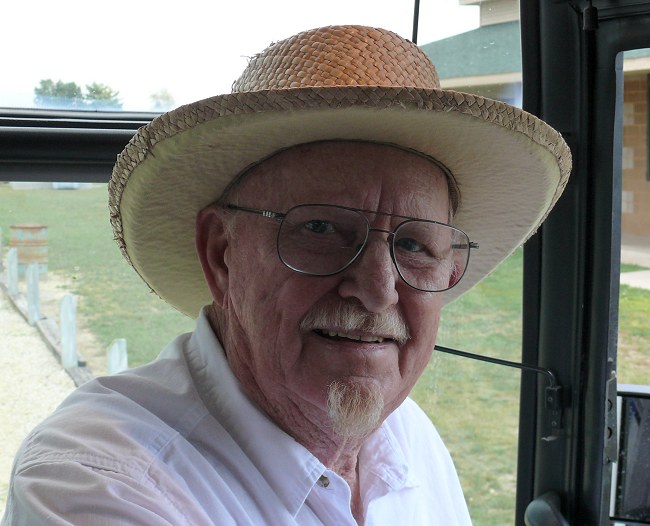
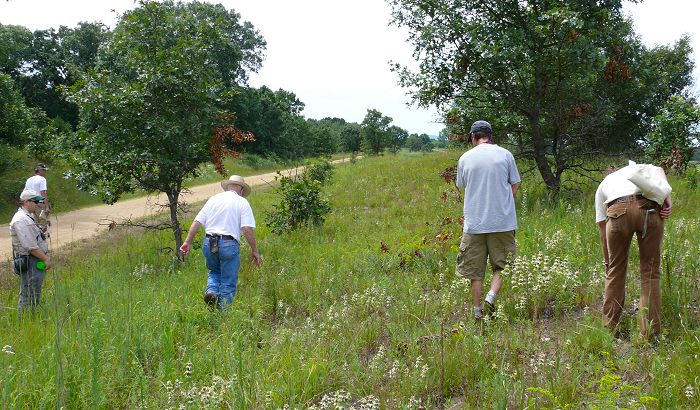
The best plant we saw was one I had never seen before. It’s called Fame flower (Talinum rugospermum) It’s unusual because its flower only stays open for an hour or so in the afternoon. So if you’re not there to see it, it’s gone. It’s on the state’s Special Concern list. It’s been found in Buffalo County, but I’ve never been able to find it. We didn’t see the flowers – it was the wrong time of day – but we did see the plants. They have succulent leaves, and tiny flowers on a long stalk.

They were growing on a dry sandy slope.

This is a Tree Frog that was hopping across the trail.
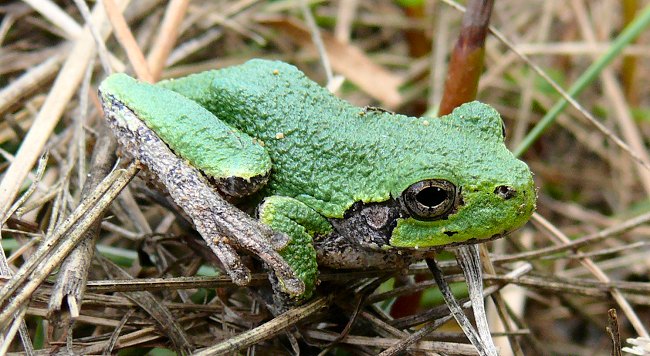
One of the nicest parts of going to Winona every morning was driving through the valleys so early in the day. Two of the mornings were very misty, and the views were spectacular. One morning I saw a mist-rainbow in our wetland. The shape was like a rainbow, but there was barely any color in the arch.

Here are some more misty scenes.
This is our wetland.
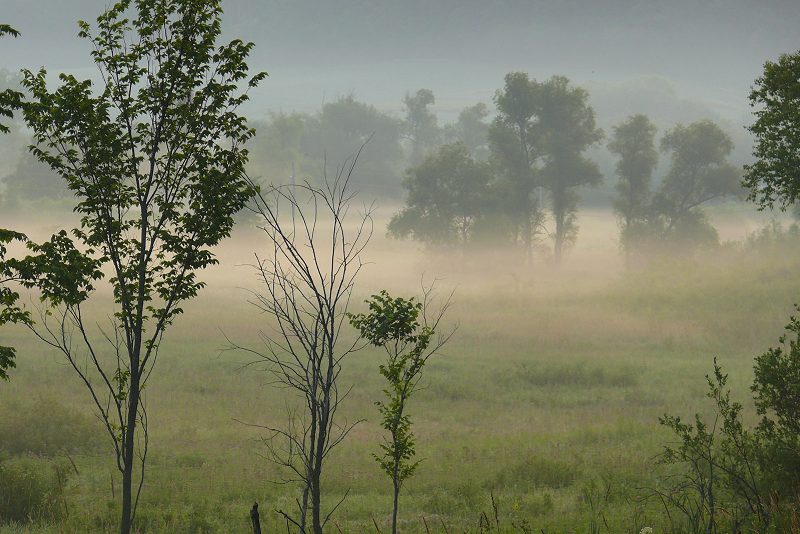

Along County Road U

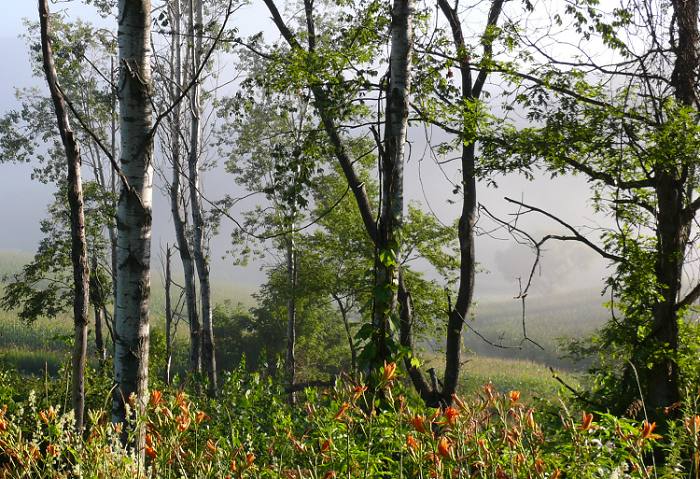
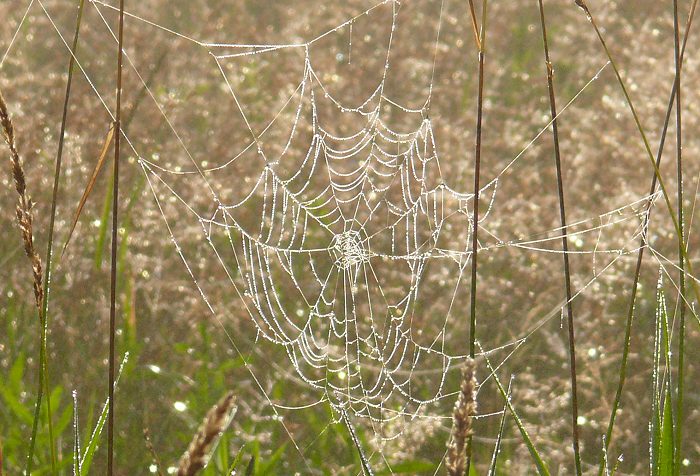
I finally finished pulling and clipping all the Sweet Clover in the wetland by the driveway. This is the way it looked with sweet Clover – a few weeks ago.
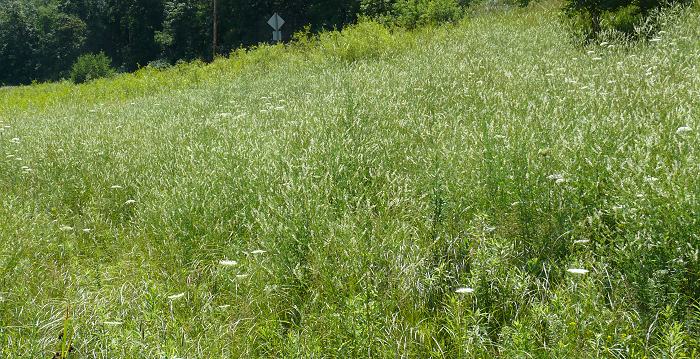
This is the “after” picture – without Sweet Clover.
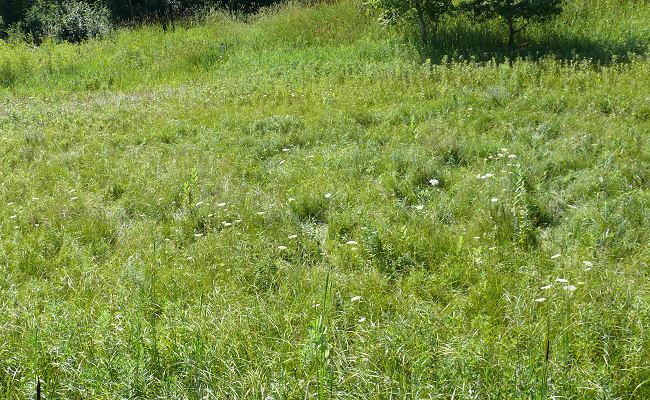
I hate taking photos of prairies that aren’t working, or ones that have weed problems. But I know I should do it. So here is the Narrows Prairie this year – full of Queen Anne’s Lace.
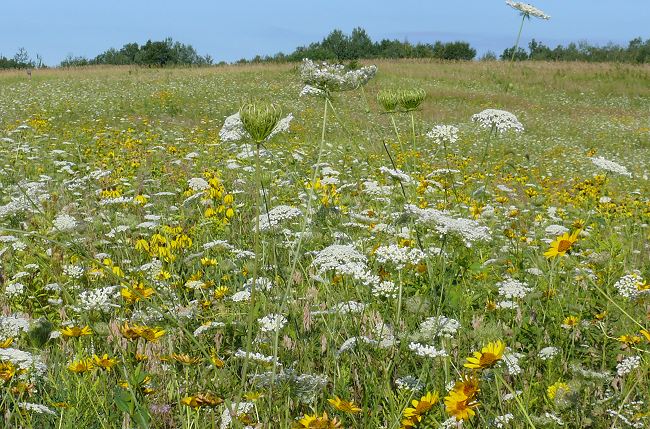
I think this was just a good year for Queen Anne’s Lace, and I also think that as the prairies get older, the Queen Anne’s Lace tends to disappear. The seeds seem to like light to germinate, and as the prairies get denser, less light gets to the ground – at least, I hope so. Our oldest prairies – Pat’s Prairie and 3 Finger Valley, which are 7 and 8 years old, don’t have much Queen Anne’s Lace.
When I was changing my caterpillar cages I found this caterpillar that had been parasitized.
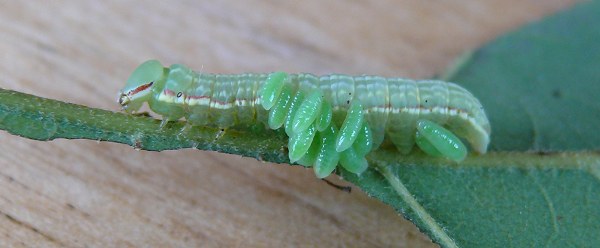
I don’t know which kind of caterpillar – possibly a Skipper. And I don’t know the parasite. But many insect parasites lay their eggs in caterpillars, and the larvae live off the caterpillars until they’re ready to hatch. (The caterpillars I raise are protected from insect parasites because they’re in screened cages, inside a screened porch. This caterpillar must have hitchhiked in on one of the branches of leaves that I brought in for my caterpillars to eat.)
Here’s a rabbit that stopped and watched us while we were starting out on our evening walk. It didn’t seem very concerned about people being so close – hopefully it will pay more attention to coyotes and foxes.
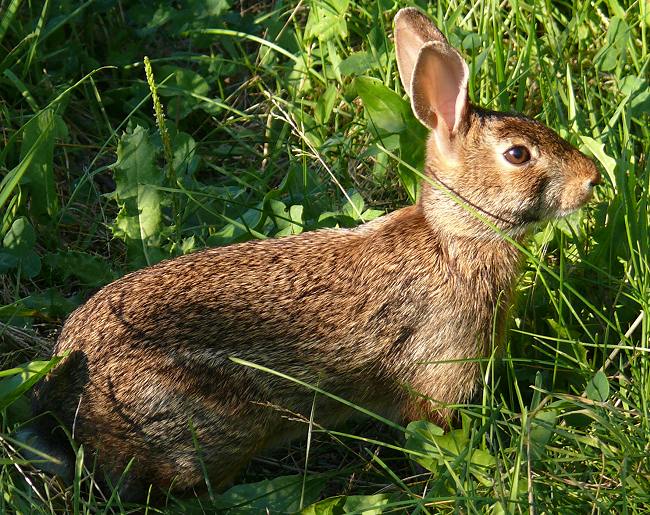
A Goldfinch nest

Goldfinches nest late in the summer, and they often make their nests on thistle plants.
